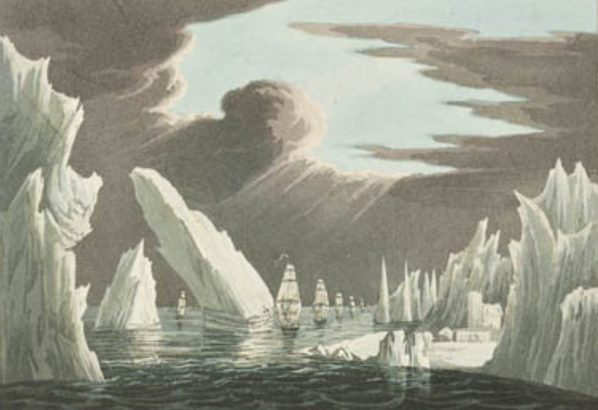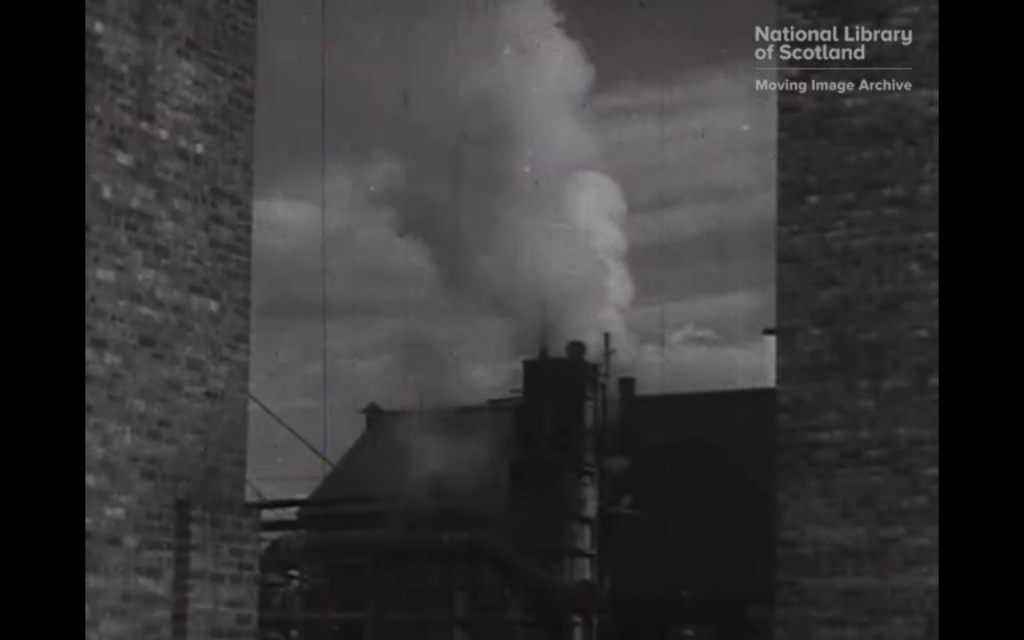The climate crisis is here. Every year, its effects become more and more disruptive to our daily lives. But the effects of the changing climate are not distributed evenly, with some countries and communities enduring far more than others. As we watch the crisis grow, the need for practical and emotional resilience at the individual and community level is greater than ever. The collections held by the National Library of Scotland can help individuals respond to the climate crisis. Using these resources, individuals and communities can increase their understanding of the climate crisis, build resilience at the local level and, crucially, find avenues of hope for the future.
What is the National Library of Scotland doing to work towards a more sustainable future?
The Library has recently launched its Climate Action Plan, a four-year plan that mainstreams sustainability into every level of our operations.
Between now and 2025, the Library will work to become a more sustainable, circular, and energy-efficient organisation. From electrifying our vehicle fleet, through updating our procurement policy to reducing our greenhouse gas emissions, the actions taken over the next four years will improve the Library’s own sustainability and hopefully inspire other organisations to follow suit.
Of course, the actions of a single organisation won’t bring about a sustainable future. But if each organisation and individual make changes, together, we can make a positive difference to our world.
Perhaps the most important aspect of our Climate Action Plan concerns not our buildings and processes but our collections. We hold millions of items – books, journals, e-books, maps, music, moving images – and these can help individuals build resilience in the face of the climate crisis. Be it a map showing the effects of coastal erosion in Scotland or an e-book on climate justice or a poem deepening our relationship with nature, the collections we hold can inspire people to act with their own communities. Over the next four years, we will increase our public-facing climate engagement, through workshops, events and reading lists. The best way the Library can help build a sustainable future for us all is to promote our collections and inspire others to reflect and respond.
How can the Library’s collections tell us about how the changing climate is affecting where we live?
For every place in Scotland we will have collection material which can help you research and understand how you are being affected by the changing climate. Over the coming weeks we will run a short series of blogs showcasing collection examples for individual locations. Often the items capture a snapshot of a place at a particular time, which can be used to create a picture of that place through time, and how it has changed.
The following projects are examples of how our collections can be used to tell the story of our changing environment.
Preserving pasts, Imagining Futures
The National Library of Scotland worked with the National Galleries of Scotland to ask people to respond creatively to works from the national collections to visualise how Scotland has been and will continue to be impacted by climate change, unless decisive action is taken.
Teams in both organisations collaborated to select objects and artworks depicting five landscapes across Scotland. Each represents a key theme of climate change, including sea level rise, biodiversity, land use and agriculture, low carbon energy production and transport. Each selected area is already being impacted by a multitude of interwoven climate change factors, affecting communities and environments.
Living Proof: A climate Story
An example of how our collection can be used to enhance and enrich the climate discussion is the film Living Proof: a climate story. Directed by Dr Emily Munro, Living Proof uses a montage of heritage films to ask audiences
- What needs to change?
- Is climate change rooted in our history?
- Can we break free from a boom and bust mentality?
- What can we do differently to ensure a healthy and sustainable future for generations to come?
Produced in partnership with Film Hub Scotland, the film is currently being screened in venues across Scotland.
How can I find out more about the climate crisis?
Use our maps website to research climate change
The Library’s online map collections can be used to illustrate and understand climate change in a wide variety of ways. Maps provide many insights into historic landscapes and environments, showing different ways of generating power, less polluting lifestyles and means of travel, fossil fuel extraction and consumption, as well as coastal erosion and sea-level rise. Once georeferenced, so that historic maps can be overlaid on their present-day location, comparison of change over time can be very revealing. Here we pick out a few examples of subjects illustrating climate change which maps can reveal.
Use our E-resources from home
The Library receives thousands of current publications every year, some through our legal deposit privilege and others are purchased e-resources. You can use most of our eResources from home for free if you are a Library member and your main address is in Scotland. Millions of pages of journals, e-books, reports, reference works, newspapers, and databases are available.
Examples:
- GreenFILE — An indexing and abstracting database of nearly 300,000 records covering environmental concerns, with full text for selected titles.
- Global Plants — An online research tool for exploring the world’s botanical resources.
- Routledge Handbooks Online — Library users have access to 2020 and some 2021 e-book titles from the ‘Environment and Sustainability’ collection.
Further reading
Read our blog posts on environmental damage and race and women with nature and look out for more information on our Climate Action pages.

